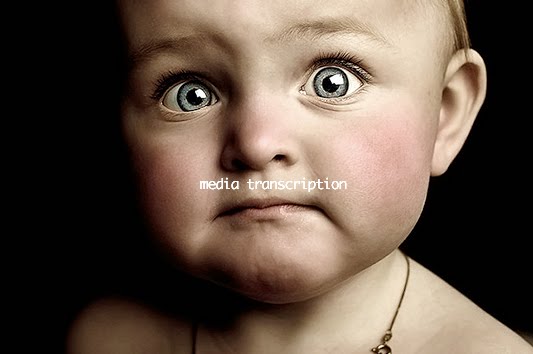Thanks to Heida for this photo. Check out her images here - http://tinyurl.com/heidaphoto
Friday, January 14, 2011
DO IT!
Listen to the radio, to television and podcasts. Listen to conversations on the street corners, in line at the bank, through open windows on your street. Listen to the clock ticking and the birds chirping and the honking horns of the city. See each letter of every word as it is spoken, every thought as it plays through your mind. Listen like the dolphins ... and type like the wind.
The Listening Post
photo source - click here to go to textually.org
Good listening is one of the main sources for accuracy in transcription. The idea of transcribing another person's words so that readers completely understand the meaning of those words is vital to both the transcriber and to her clients. Like every skill, the more we practice, the more adept we become. The general rules for developing excellent listening skills include:
1. Paying close attention to specific references, facts and figures, inferences, judgments and opinions. These help to make logical connections among those things you have heard on multiple occasions.
2. When one is practiced at listening, it is easy to denote the speaker's motive, personal involvement, self interest, intensity and expectation. These clues help a transcriber "hear" words and phrases more clearly and correctly through "context listening" rather than verbatim.
3. Believe it! Good posture and a relaxed atmosphere is key to listening well. Distraction is the nemesis to hearing correctly. Turn off your phone. If you are working from home, plan work time when you won't be interrupted. A common misconception is that freelancers don't work on a schedule. The successful ones absolutely do!
4. Practice listening. Conversation is one of the best ways. You will hear all sorts of dialects and accents. You will also learn to focus and "tune out" background noise. Listen to the television from another room. Or turn down the volume to a movie to sharpen your ears. You can learn to read lips and body language for video transcribing. Just as speed readers can run their finger down the center of a page and still catch the words on both sides simultaneously, a practiced listener who transcribes from video can almost predict what the dialogue may be by watching "verbal language" while listening to the words.
"Listen. Do not have an opinion while you listen because frankly, your opinion doesn't hold much water outside of Your Universe. Just listen. Listen until their brain has been twisted like a dripping towel and what they have to say is all over thefloor page."
(Hugh Elliott from Standing Room Only)
1. Paying close attention to specific references, facts and figures, inferences, judgments and opinions. These help to make logical connections among those things you have heard on multiple occasions.
2. When one is practiced at listening, it is easy to denote the speaker's motive, personal involvement, self interest, intensity and expectation. These clues help a transcriber "hear" words and phrases more clearly and correctly through "context listening" rather than verbatim.
3. Believe it! Good posture and a relaxed atmosphere is key to listening well. Distraction is the nemesis to hearing correctly. Turn off your phone. If you are working from home, plan work time when you won't be interrupted. A common misconception is that freelancers don't work on a schedule. The successful ones absolutely do!
4. Practice listening. Conversation is one of the best ways. You will hear all sorts of dialects and accents. You will also learn to focus and "tune out" background noise. Listen to the television from another room. Or turn down the volume to a movie to sharpen your ears. You can learn to read lips and body language for video transcribing. Just as speed readers can run their finger down the center of a page and still catch the words on both sides simultaneously, a practiced listener who transcribes from video can almost predict what the dialogue may be by watching "verbal language" while listening to the words.
"Listen. Do not have an opinion while you listen because frankly, your opinion doesn't hold much water outside of Your Universe. Just listen. Listen until their brain has been twisted like a dripping towel and what they have to say is all over the
(Hugh Elliott from Standing Room Only)
Subscribe to:
Posts (Atom)

